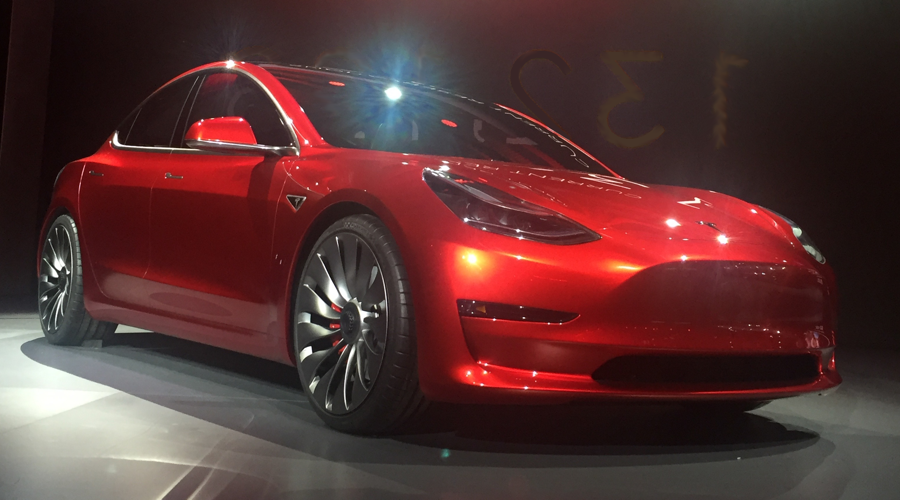
If the Tesla Model 3 and new electric vehicles (EVs) from other manufacturers can deliver on the recent pronouncements made, then a wider electric car adoption can be expected than previously thought, according to Wood Mackenzie’s latest research. This would have significant implications on the U.S. oil and power sectors potentially in the 2025-2035 period.
“Our study and modeled scenarios identify signals of a possible disruption,” said Prajit Ghosh, Wood Mackenzie’s research director for Americas power and renewables. “This disruption would not be a result of the Tesla Model 3 alone, rather its role as a catalyst for wider growth in electric car production by other manufacturers, which is already happening.”
Tesla Model 3 promises to move electric cars from niche to mainstream, spurring larger electric car adoption in transport.
Chevrolet’s Bolt EV is an example of the broader trend, with deliveries to begin late 2016 at a price point and range similar to Tesla’s Model 3. Other traditional and even emerging companies are at different stages of introducing electric cars. So movements towards producing more models and brands of electric cars is already underway with market entry around the 2020 timeframe.
“Can it get disruptive for the energy sector ? It could – just not right now,” Prajit adds.
Wood Mackenzie looks at four ‘What if’ scenarios to help quantify the potential impacts of EV penetration of the U.S. auto fleet on gasoline and power demand.
“In our 2016 first half base case we expect U.S. gasoline demand to fall from 9.3 million b/d to 6.5 million b/d by 2035, which includes a loss of 300,000 bpd due to EVs,” said Prajit Ghosh, Wood Mackenzie’s research director for Americas power and renewables. “In our ‘increased EV adoption’ scenarios, we estimate that demand could fall by 350,000 to 1 million b/d by 2035, a 5 to 15 percent reduction from the base case.”
The resulting shift in power demand under our main scenarios would be 40 to 200 TWh (Terra watt hours) or 2 to 5 years of market growth.
This equates to 50 to 200 TWh of incremental power demand or one to three bcfde, in natural gas terms. Wood Mackenzie expects this would accelerate power demand growth by two to four years– significant for a market that has seen no load growth in the past seven years.
There is still additional downside risk to oil demand in the case of full scale EV adoption- representing all new car sales. If this were to happen, demand could be reduced by as much as 2 mmbpd by 2035 compared with base case levels.
“EVs would likely become a disruptive force in the oil industry before they do for the power industry, especially considering that much of the charging infrastructure is currently being built in areas suffering from renewable over generation, where additional demand would be welcomed,” said Ghosh.
For most of the ‘What if’ scenarios in the report, power markets should be able to absorb the incremental demand from EVs given the timeframe but local issues are still possible in pockets of high EV penetration.
Electric vehicles as a carbon reduction solution
U.S. gasoline demand could be reduced by an additional 350,000 bdp to 1 mmbpd by 2035.
An often cited benefit for encouraging larger adoption of EVs is the significant savings in carbon emissions that would accrue from such a switch. To that end, the latest Wood Mackenzie report examines how EVs could mitigate carbon emissions.
In a post COP21 world, carbon policy will gain more importance in considering the electrification of transport, since transport and power are the main sources of CO2 emissions. Electric cars could play a significant role in mitigating carbon emissions by utilizing lower emissions fuels like natural gas, solar, and wind for electric generation.
The success of this dynamic will be driven by a variety of issues specific to the power and renewables sector. “Electrifying transport as part of a wider strategy to increase renewables penetration within the power sector, is arguably an effective means to reduce carbon emissions from transport, but it is not a slam dunk,” said Ghosh.